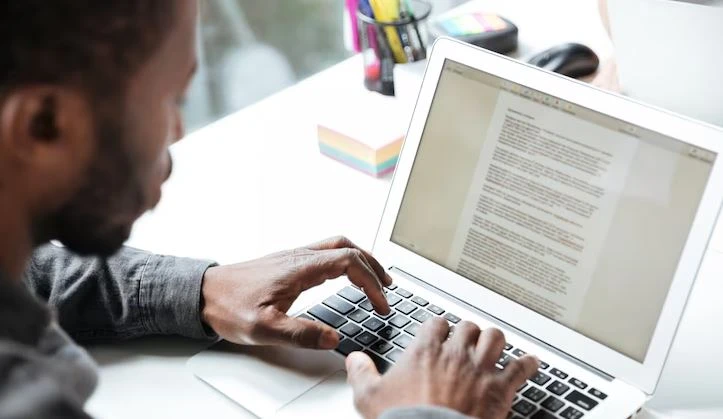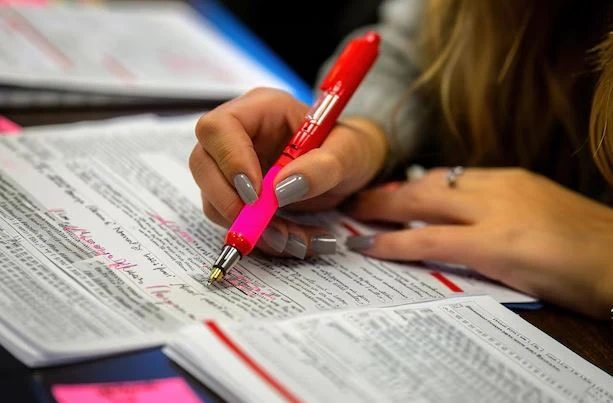Table of Content
Know the Difference Between Copyediting and Proofreading
Being a writer or editor, it is important to cover all bases while checking a document. You need to make sure certain things while analyzing the quality of an article, press release or any other document. Many people often ask how copyediting vs proofreading differs in style. Some think that both of these practices are the same and require similar techniques to ensure error-free documents.
But, when looked upon carefully, the glaring difference between the two practices just like copywriting vs copyediting can be identified easily. Yes, the goal of both of them are the same but they utilize a separate technique to find out different mistakes in a document.
If you want to become a skilled editor, you need to learn how copyediting vs proofreading varies in different practices. In this blog, we have given a brief overview of both of these techniques, allowing you to understand their methods precisely.
Let’s understand the basics as to how various editing and proofreading services differ in techniques.
Copyediting vs Proofreading: The Editing Process
Before moving on to the copyediting vs proofreading debate, take a look at the fundamental levels of editing below.
Substantive:
Substantive editing can be termed as a high-level process that requires in-depth document review. This includes complete checkup of context, structuring and other attributes. In this editing process, you may also need to change the whole document if it is not written as per the requirements.
Mechanical:
Mechanical editing is not much complicated and only requires document checkup in terms of simplifying key mistakes and readability. It is a perfect example of the proofreading process. Thus, can be said as a final stage to complete any article, blog or web copy.
What is Copyediting?

Copyediting can be understood as a first stage of checking a document. It is a process in which an editor checks the whole document to figure out different types of mistakes. From punctuation to grammatical errors, everything is fixed during the copyediting process.
Generally, companies hire experienced copywriters and editors to finalize different types of documents. They make sure to take services from a professional who understands the difference between copyediting and proofreading. Starting from grammatical errors to punctuation, these specialized personals are well versed in finding out different faults present in a document.
Many times, a writer does not know what does a professional copywriter do about these mistakes while writing a document fluently. This happens with most of the writers, especially the starters. These errors are then highlighted when a thorough analysis is conducted by a copyeditor. These people are actually very good in finalizing a first draft without having any error or mistake visible to the eye.
Polish your content to perfection with our editing and proofreading services!
Perfect Your ContentCopyediting vs Copywriting
The difference between copywriting vs copyediting is quite simple. A copywriter is a person that is responsible for writing a copy from scratch. He/she needs to look at different copywriting examples to understand the art of impactful writing.
In contrast, a copyeditor reviews the document written by the copywriter. The reason is that copywriters often make mistakes while writing a blog, web copy or any other material. This is now the responsibility of copyeditors to find out those mistakes and make a document error free.
To do this, a copyeditor must need to be a subject expert as well. He/she must know about the context and tone required for a document and how it should be checked.
Copyediting vs Line Editing
Just like copyediting vs proofreading, many people also couldn’t find any difference between the copyediting and line editing process. Yes, it looks like a similar thing but differs in some key areas.
A line editor checks the efficiency and impact of every line. This requires checking every word in terms of meaning and connecting with the core objective. They basically know about the context and how to deliver it with the right words. This is indeed a time-taking process and requires a specialist to do the job.
On the other hand, a copyeditor examines the whole document rather than just looking at lines. Though, he would be also responsible to optimize the content quality but not just focusing on lines. He must have to look at every other thing that is written on the page or article. From mid notes to CTA messages, copyeditors make sure to deliver a copy that is impactful as well as technically correct.
What is Proofreading?

Proofreading can be termed as a final stage of completing a written document. It is a practice in which an editor looks for those mistakes that are missed during the copyediting process. It is simply not guaranteed that an edited copy would not have any errors. We know how much workload editors can have during a day, causing them to miss crucial errors.
To double-check the document, companies take additional services from a proofreader who understands the difference between copyediting and proofreading. Their primary responsibility includes looking into the format and find out any remaining typo errors. Not only that, but they have to make sure that the flow of the content is also right, giving a proper view of the objective.
If you are looking to make your career in the writing field, you must need to understand the difference between copyediting vs proofreading. The process of proofreading simply does not mean to rewrite a document or change the tone. But, it requires you to check whether the readability of the document is fine or not. This can be done by resolving spelling mistakes, incorrect word usage and other similar stuff.
Copyediting vs Proofreading
Many people do not know how to become a copywriter and craft impactful content. These people often stay confused while finding the difference between copyediting and proofreading. For those starters, here are some core insights defining the difference between these two practices.
Copyediting
Copyediting involves a complete checkup of the document. It gives editors an authority to change everything looking at the given guidelines and objectives. From content tone to right context, copyeditors are given the responsibility to check everything, so that a final copy can look brilliant.
Proofreading
Proofreading is a second step that requires a final review of the document. This review is a bit different from the copyediting process. It is only conducted to find any remaining imperfections in the document, such as typo errors, grammatical mistakes and more others. As compared to copyediting, proofreading is a much shorter process and requires lesser subject expertise.
Meanwhile, some companies often hire copyeditors to take the dual role. This means that they have to first finalize the copy and then proofread again to eradicate any existing errors.
Copyediting and Proofreading Courses
If you want to become a good copyeditor, you must need to understand the difference between copyediting vs proofreading and master a few practices related to the quality review process. You also need to know different types of copywriting to understand review techniques required for every other document. Here are some of the platforms where you can find top courses of copyediting and proofreading.
Coursera Copyediting and Proofreading Course
Coursera stands out as one of the premier online platforms for learning, offering a diverse range of courses specifically tailored to the field of copyediting. These courses cater to learners of all levels, from beginners looking to grasp foundational concepts to professionals seeking to refine their expertise.
Each course is thoughtfully designed by industry experts and academic professionals, adhering to recognized standards and best practices in the field. This ensures that learners gain not only theoretical knowledge but also practical skills applicable to real-world scenarios.
Udemy:
Udemy is another excellent platform for those looking to delve into the fields of copyediting and proofreading. It offers an extensive selection of courses designed to cater to a wide range of learners, from complete beginners to those with some experience looking to enhance their skills.
For beginners, Udemy serves as an ideal starting point to develop and refine your natural editing abilities. The platform’s user-friendly interface and affordable pricing make it accessible to a broad audience, while the flexibility of on-demand video lessons allows you to learn at your own pace.
The Writers College:
The Writers College is a highly regarded online portal for those seeking quality education in copyediting and proofreading. Known for its commitment to excellence, it offers a carefully curated selection of courses designed to equip learners with essential skills in these fields.
One of the key advantages of The Writers College is its affordability, making it accessible to learners from diverse backgrounds. The reasonably priced courses provide beginners with an excellent opportunity to embark on their journey in copyediting without financial strain.
Concluding the Copyediting vs Proofreading Debate
It is always very important to know about the difference between copyediting vs proofreading processes. Both of these practices have the same objectives, but require different approaches to do the job. As a writer, you must need to learn the difference between copyediting vs proofreading techniques. It will not only hone your skills, but will make your profile an expert in the field of editing.
This blog has shown some key differences between these two techniques. It will help you to understand both of them and simplify your editing based on the given requirements.
Frequently Asked Questions (FAQs)
| 1. What is the difference between copyediting and proofreading? Copyediting vs proofreading seems to be a confusing question among many people. Putting it straight, copyediting is a process of reviewing the whole document and performing content changes if needed. Whereas proofreading is a simple process of checking typos, spelling mistakes and other errors. |
| 2. What is the difference between copyediting and editing? Editing is a form of substantive editing and it requires thorough review of the document. On the other hand, copyediting relates to the mechanical editing and it requires checkup of the structure and context of the copy. |
| 3. Can I find freelance copyediting jobs? Yes, there are many freelance copyediting jobs available out there. You can find plenty of them by visiting platforms like Fiverr, Upwork and more. |
| 4. Can I become a good proofreader without having a degree? Yes, you can become a great proofreader without a degree. You just need to optimize your skills as per the latest practices which can be done by looking into different editing examples. |
| 5. What are different copyediting symbols used for? Copyediting symbols or marks are used to denote writers where the mistakes are. It gives them an easy way to find out areas where major content corrections are needed. |

Unleash your brand story`s potential with eContentSol – your creative writing companion. We craft narratives that captivate. Ready to elevate your content game? Dive into creativity with us and let`s bring your ideas to life.
